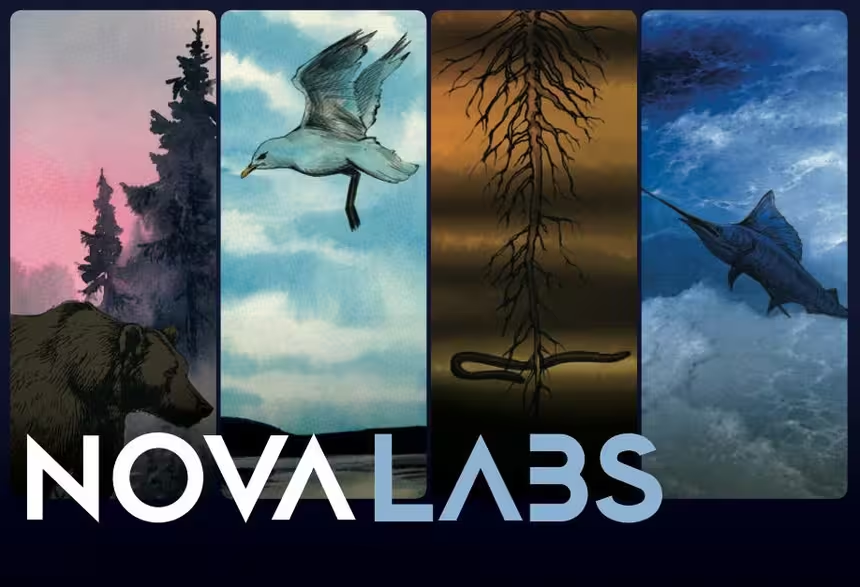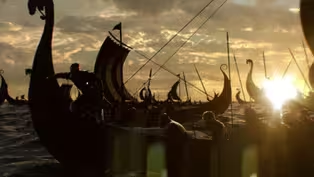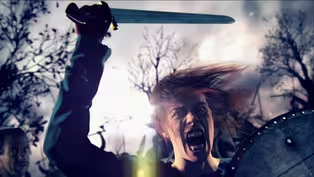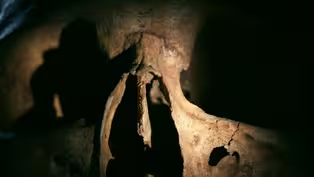
What Fish Revealed About This Mysterious Grave
Clip: Season 46 Episode 10 | 2m 46sVideo has Closed Captions
Could these bones be the last remains of a legendary Viking army?
Archaeologists discovered a mass grave of what they thought to be ninth-century Vikings. But for some reason, the radiocarbon dates of their bones, found by measuring a radioactive carbon isotope, appeared much older.
Problems playing video? | Closed Captioning Feedback
Problems playing video? | Closed Captioning Feedback
National Corporate funding for NOVA is provided by Carlisle Companies and Viking Cruises. Major funding for NOVA is provided by the NOVA Science Trust, the Corporation for Public Broadcasting, and PBS viewers.

What Fish Revealed About This Mysterious Grave
Clip: Season 46 Episode 10 | 2m 46sVideo has Closed Captions
Archaeologists discovered a mass grave of what they thought to be ninth-century Vikings. But for some reason, the radiocarbon dates of their bones, found by measuring a radioactive carbon isotope, appeared much older.
Problems playing video? | Closed Captioning Feedback
How to Watch NOVA
NOVA is available to stream on pbs.org and the free PBS App, available on iPhone, Apple TV, Android TV, Android smartphones, Amazon Fire TV, Amazon Fire Tablet, Roku, Samsung Smart TV, and Vizio.
Buy Now

NOVA Labs
NOVA Labs is a free digital platform that engages teens and lifelong learners in games and interactives that foster authentic scientific exploration. Participants take part in real-world investigations by visualizing, analyzing, and playing with the same data that scientists use.Providing Support for PBS.org
Learn Moreabout PBS online sponsorship- [Narrator] This sleepy village in the heart of England was the scene of a gruesome discovery.
Nearly 300 battle scarred skeletons.
Could these be the last remains of a legendary Viking army that swept through medieval Britain.
In the 1990s, when the archeologists carbonated those bones, the results were shocking.
(upbeat music) Many of the bodies appeared to be a century too old.
To belong to the great Viking Army, a mystery Cat Jarman has been determined to solve.
(upbeat music) - Everything that the bones, the artifacts, the coins is really screaming Viking great army.
But the science, the radiocarbon dates said that's not possible.
- Scientists date bones by measuring the amount of Carbon 14 they contain.
This radioactive isotope remains in the skeleton after death.
It decays over time at a steady rate.
So by measuring what's left in the bones, scientists can figure out roughly when the person died.
- What we didn't realize 20 years ago, we actually have to take into account how the carbon that we are dating gets into our bodies and it actually gets into our bodies through the food that we eat.
(tranquil music) - [Narrator] It turns out that people with a diet high in fish absorb older carbon than meat eaters.
(tranquil music) That's because the oceans contain carbon that is hundreds of years old.
(tranquil music) When fish ingest this and people in turn eat the fish, the ancient carbon enters their bones.
(tranquil music) Scientists now know that the bones of people who eat fish appear older than they really are, skewing carbon dating results.
Cat has also been able to calculate just how much fish each person has eaten, by using the distinctive chemical markers, seafood leaves in human bones.
- I looked at all these different bones and it turned out everybody with a sort of wrong date, as it were, had been eating a lot of fish.
That was a really brilliant moment actually, to be able to see those states fitting perfectly, and that meant the entire mass grave could now be dated to the late 9th century, meaning it's completely consistent with the Viking Great Army.
(graphics whooshing)
Video has Closed Captions
Preview: S46 Ep10 | 28s | Bioarchaeologists investigate a 9th-century mass grave thought to hold a lost Viking army. (28s)
Who Was This High-Status Viking Warrior?
Video has Closed Captions
Clip: S46 Ep10 | 1m 55s | DNA evidence reveals surprising truth about the identity of a revered 9th-century Viking. (1m 55s)
Why Did These Vikings' Bones Appear Older Than They Are?
Video has Closed Captions
Clip: S46 Ep10 | 2m 18s | Hint: Carbon in the ocean is different than carbon on land. (2m 18s)
Providing Support for PBS.org
Learn Moreabout PBS online sponsorship
- Science and Nature

Capturing the splendor of the natural world, from the African plains to the Antarctic ice.













Support for PBS provided by:
National Corporate funding for NOVA is provided by Carlisle Companies and Viking Cruises. Major funding for NOVA is provided by the NOVA Science Trust, the Corporation for Public Broadcasting, and PBS viewers.





